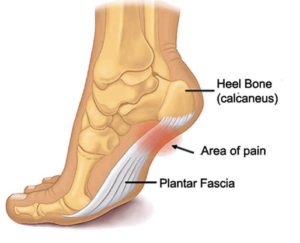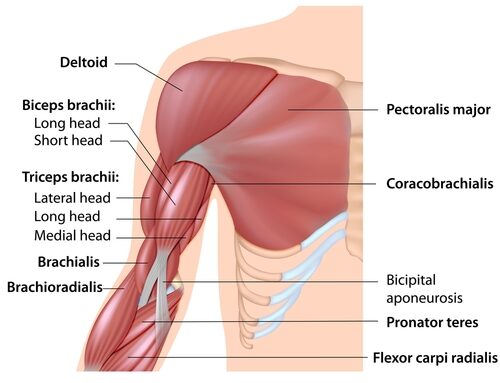Shin splints are a condition that affects athletes and active individuals alike. It’s characterized by pain in the lower leg that can range from slight discomfort to severe and debilitating pain. While this condition can be painful, there are ways to prevent it from occurring and treat it when it does happen. In this article, we’ll discuss self-care strategies for shin splints, including prevention and treatment methods.
leg that can range from slight discomfort to severe and debilitating pain. While this condition can be painful, there are ways to prevent it from occurring and treat it when it does happen. In this article, we’ll discuss self-care strategies for shin splints, including prevention and treatment methods.
Fortunately, there are several ways to reduce your risk of developing Shin Splints as well as effective treatments available if they do occur. We’ll explore these topics in detail in this article so that you can take control of your own health and get back out there doing what you love!
What Are Shin Splints?
A shin splint is a common term used to describe any pain in the lower front part of the shinbone. It’s caused by overworking muscles, tendons, and bone tissue around the tibia. Medial tibial stress syndrome is the injury most referred to when talking about shin splints, but other problems that could be referred to are stress fractures, compartment syndrome, muscle tears or periostitis.
What Causes Shin Splints?
Shin splints are a common overuse injury that affects athletes and exercisers of all levels. The most common cause of shin pain is a repetitive strain on the muscles, bones and tendons of the lower leg. This strain occurs when a person runs or does another strenuous activity for a long period of time, especially on hard surfaces or uneven terrain. Poorly fitting shoes or inadequate stretching prior to exercise contribute to an increased risk of shin splints.
People who have flat feet or weak muscles in their hips and core are more likely to getde shin splints as they place extra stress on the lower leg muscles and bones when running or jumping. In addition, tight calf muscles may contribute to shin splints due to limited flexibility in these areas. When inflammation of the muscles happens in the lower leg, it can become painful due to there being no room for the extra fluid.
It’s important to be mindful of your body’s limitations when engaging in physical activities, as this will help you identify any potential risks associated with the development of shin splints early on. Making sure you wear proper footwear, warm up adequately before exercising, and gradually increase intensity are all important steps to help prevent shin splints.
Signs And Symptoms Of Shin Splints
 Pain and swelling in the front of the lower leg is usually the primary symptom of shin splints. To identify if you have this condition, look for these signs and symptoms: tenderness along the inner side of your shin bone, inflammation, dull ache that worsens during physical activity or exercise, and pain that subsides when resting.
Pain and swelling in the front of the lower leg is usually the primary symptom of shin splints. To identify if you have this condition, look for these signs and symptoms: tenderness along the inner side of your shin bone, inflammation, dull ache that worsens during physical activity or exercise, and pain that subsides when resting.
It’s important to note that if left untreated, shin splints can become worse and lead to more serious conditions like stress fractures. To prevent this from happening it’s important to modify your exercise routine. Start with low-impact activities and Increase intensity levels to high impact gradually and make sure to wear appropriate gear such as supportive running shoes to reduce the impact on your legs. Additionally, stretching before and after exercising can also help alleviate some of the discomfort associated with this leg pain.
Other Lower Leg Injuries
Beyond shin splints, there are other lower leg injuries that can cause pain. A stress fracture is a small crack in a bone in the lower leg that occurs due to repetitive stress from activities such as running or jumping. It’s important to recognize the symptoms of a stress fracture, which include pain that increases with activity and decreases with rest. If left untreated, a stress fracture can become worse and cause more serious damage. To prevent this from happening, proper treatment should be sought from a sports medicine physician or physical therapist.
Periostitis is inflammation of the periosteum with damage to the soleus muscle, the anterior tibialis, or posterior tibialis. The connection of membranes being to rip apart and the muscle fibers pull away from the bone. It may leave the bone feeling bumpy due to scar tissue built up.
Another common lower leg injury is tendonitis. This occurs when the tendons that connect muscles to bones become inflamed due to overuse or strain on the lower legs. Symptoms of tendonitis include pain and tenderness along the affected area as well as swelling and stiffness. Treating tendonitis involves resting the area, applying ice several times each day, taking anti-inflammatory medications such as ibuprofen, and stretching exercises to promote healing of the tendons.
In addition to shin splints and other lower leg injuries, athletes can also experience chronic issues such as plantar fasciitis or heel spurs which involve inflammation of connective tissues in the foot and ankle area. These conditions require specific treatments tailored to each individual patient by a sports medicine specialist or physical therapist for best results. Resting the affected area, using ice therapy for 20 minutes at least two times per day, using orthotics if recommended by your doctor, stretching regularly and taking anti-inflammatory medication are all helpful approaches for treating these chronic issues. Knowing how to identify and treat common lower leg injuries can help athletes stay active without interruption from pain or discomfort associated with these conditions.
fasciitis or heel spurs which involve inflammation of connective tissues in the foot and ankle area. These conditions require specific treatments tailored to each individual patient by a sports medicine specialist or physical therapist for best results. Resting the affected area, using ice therapy for 20 minutes at least two times per day, using orthotics if recommended by your doctor, stretching regularly and taking anti-inflammatory medication are all helpful approaches for treating these chronic issues. Knowing how to identify and treat common lower leg injuries can help athletes stay active without interruption from pain or discomfort associated with these conditions.
Treatment And Prevention Of Shin Splints
Treating and preventing shin splints can be quite a challenge. However, it is possible to manage the pain and discomfort with proper treatment and prevention methods.
First, it is important to rest from any activity that’s causing the pain if you experience shin splints. You should apply ice for 20 minutes at a time several times a day until the pain subsides. In addition, you may want to consider taking over-the-counter pain medications such as ibuprofen or naproxen sodium to reduce inflammation and alleviate pain.
In order to prevent shin splints from occurring, you need to strengthen your muscles by doing lower leg strengthening exercises, such as calf raises and squats. Additionally, make sure that you are stretching properly before beginning any physical activity and use appropriate footwear while exercising. If you are able to avoid putting too much stress on your legs and feet while exercising, then you will be better able to prevent shin splints from occurring in the future.
It is important to remember that when treating or preventing shin splints, rest is key. Taking time off from physical activities can help ease the pain associated with shin splints and provide relief. Therefore, if you feel any type of discomfort in your shins due to exercise or physical activity, take some time off until all symptoms subside before continuing with activities again.
Is Massage Good For Shin Splints
 Massage can be beneficial for those suffering from shin splints. It helps to reduce pain and improve circulation. Massage can also help to break up scar tissue, which may have formed around the muscles in the shins due to repetitive strain. This can help reduce inflammation and improve function.
Massage can be beneficial for those suffering from shin splints. It helps to reduce pain and improve circulation. Massage can also help to break up scar tissue, which may have formed around the muscles in the shins due to repetitive strain. This can help reduce inflammation and improve function.
Overall, massage may provide relief from the pain of shin splints, but it should be used in combination with other treatment options such as stretching and strengthening exercises. Exercise to strengthen the shins can help prevent the recurrence of shin splints by increasing support for them during activity. Schedule your session here now!
Conclusion
In conclusion, shin splints are a common and painful injury. They occur when there is too much stress on the muscles in the lower leg and can be caused by a variety of activities. Symptoms include tenderness and swelling along the shinbone, as well as pain that worsens with activity. Treatment includes rest, stretching, ice therapy, compression, and orthotic supports. Massage can also help reduce pain and inflammation.
Prevention is key when it comes to shin splints. I recommend stretching before any physical activity to loosen tight muscles in the lower legs and using proper footwear to support your feet while exercising. It’s also important to increase the intensity gradually when starting a new exercise regimen or increasing an existing one. Finally, make sure to take breaks throughout your workout to allow your body time to recover from any strenuous activities that you do.
Overall, shin splints may be painful and debilitating if not treated properly. With proper prevention methods such as stretching and proper footwear, as well as treatment for shin splints such as rest, ice therapy, compression and orthotic supports, you’ll be able to reduce the risk of suffering from these injuries in the future. With this knowledge in hand, you’ll be able to enjoy being active without worrying about shin splints!







